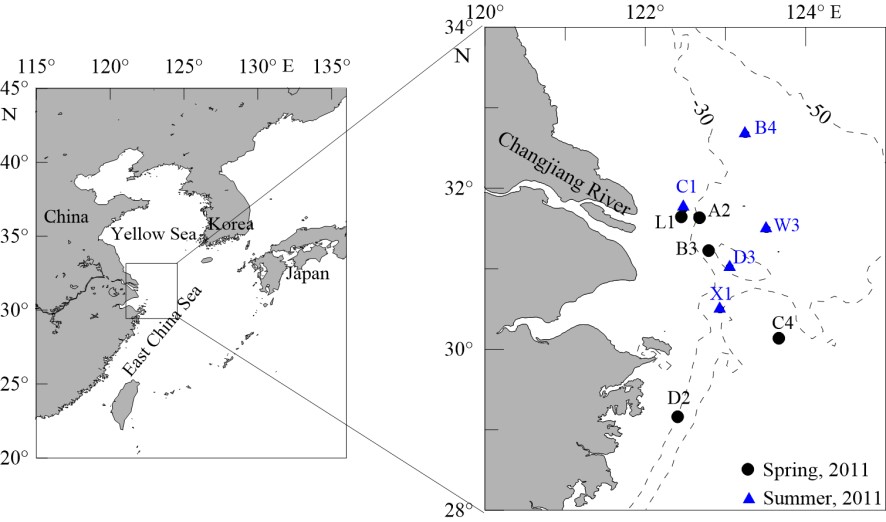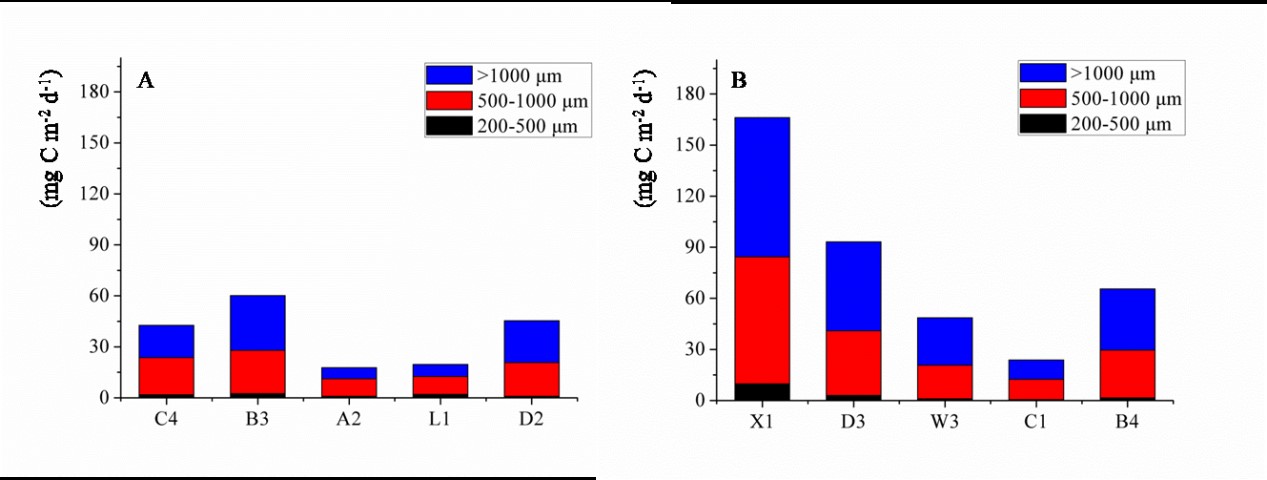Copepods are the most common pelagic metazoans in the ocean, accounting for as high as over 70% of total mesozooplankton abundance at most cases. Previous studies revealed that copepods fecal pellets (FPs) played significant role in the carbon export in the ocean, and their sedimentation sometimes could account for a significant part of the total particulate organic carbon (POC) sedimentation to the bottom. With a small portion of the world’s ocean surface area, coastal seas play a critically important role in the global oceanic carbon cycle. Receiving large amounts of riverine inputs and upwelled nutrients, coastal seas sustain a disproportionate high biological productivity there, and are considered as sinks of atmospheric CO2 as a whole. Coincided with the high values of phytoplankton biomass in the coastal sea, copepods biomass is also found to be high in these areas. However, despite high levels of copepods abundance in the coastal sea and their important implications in the carbon export of their FPs in these areas, few studies have focus on the role of copepods FPs played in the carbon export in the coastal sea, which would hamper our comprehensive understanding of biological pump in these areas.
In order to clarify the role of copepods FPs played in the carbon export in the coastal environment, two cruises were carried out in the Changjiang (Yangtze River) estuary during spring and summer in 2011 (Fig.1), and FPs carbon concentration, their production rates and sinking rates were measured. The copepods FPs carbon was significantly lower than that of phytoplankton cells during both cruises, which indicated that copepods FPs only accounted for a small part of POC pool in the Changjiang (Yangtze River) estuary. Production rates of copepods FPs ranged from 0.68 to 1.49 pellets ind-1 h-1 (mean = 1.05 ± 0.23 pellets ind-1 h-1) in spring and 0.62 to 1.37 pellets ind-1 h-1 (mean = 1.07 ± 0.21 pellets ind-1 h-1) in summer, and the high values always appeared at stations with high phytoplankton biomass. Sinking rates of copepods FPs in spring (mean = 73.46 ± 47.56 m d-1) were lower than that in summer (mean = 92.81 ± 56.80 m d-1), and this was mainly due to the ballasting effect of silicified diatoms on the sinking FPs in summer. Finally, the potential FPs export flux was calculated (Fig.2), and it was slightly higher than the export flux of phytoplankton cells during both cruises, indicating that copepods FPs comprised a substantial fraction of exported carbon in the Changjiang (Yangtze River) estuary. This study strengthens the importance of copepods FPs in the carbon export in the eutrophic coastal sea.

Fig.1 Study sites in the Changjiang (Yangtze River) estuary during spring and summer in 2011. Dotted lines represent bathymetry (m).

Fig.2 Potential export flux of FPs produced by three different size fractions of copepods at the survey stations during spring (A) and summer (B).
|
|

Address: 7 Nanhai Road, Qingdao, Shandong 266071, China
Tel: 86-532-82898902 Fax: 86-532-82898612 E-mail: iocas@qdio.ac.cn


